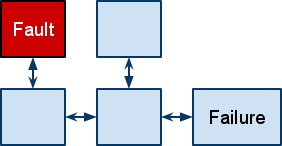Enter place data into the Spreadsheet Mapper to dynamically generate KML of your places which you can view in Google Earth!
More Armchair Archaelogy using Google Earth
Back in 2006, Scott Madry made news by with some archeological discoveries in France, and was first given the name of an “armchair archeologist” to describe a person that uses Google Earth (or related software) to make significant archeological discoveries in other areas of the world.
More recent examples include the discovery of a buried Peruvian pyramid and meteor craters in Australia and the Saharan Desert.
However, today’s story takes those to a whole new level, with David Kennedy of Perth, Australia discovering nearly 2,000 archaeological sites in Saudi Arabia!
To be sure of what he was looking at, Kennedy had a friend in Saudi Arabia visit a few of the sites to make sure they weren’t just shadows or other natural formations. His friend was able to confirm his discoveries, as seem in the image below:

Details of these finds and the methods used to uncover them have been posted in the Journal of Archaeological Sciences
As Curt Hopkins at ReadWriteWeb points out, tools such as Google Earth won’t allow archaeologists to do all of their work from a computer. However, we’ve already seen many examples of how data discovered in Google Earth can be used to pinpoint locations to dig, potentially saving many hours.
Contracts for Java
If you’ve ever spent hours debugging your Java code, today’s blog post is for you.
Often bugs that are frustratingly elusive and hard to track down appear simple or even trivial once you have found their cause (the fault). Why are those bugs hard to track down? One possibility is that the fault is in a completely different part of the program than its symptom (the failure).

Contracted code reveals failures much closer to their fault, leaving you with a far simpler problem to solve:
 Traditionally, Java programmers enforced preconditions using explicit parameter validation code in public methods, and assertions in non-public methods. Likewise, they enforced invariants and postconditions using assertions. This approach is described in detail here. Since then, new features in Java 5 have enabled a more convenient and expressive implementation of contracts.
Traditionally, Java programmers enforced preconditions using explicit parameter validation code in public methods, and assertions in non-public methods. Likewise, they enforced invariants and postconditions using assertions. This approach is described in detail here. Since then, new features in Java 5 have enabled a more convenient and expressive implementation of contracts.
Contracts for Java is our new open source tool. Preconditions, postconditions, and invariants are added as Java boolean expressions inside annotations. By default these do nothing, but enabled via a JVM argument, they’re checked at runtime.
•
@Requires,@Ensures,@ThrowEnsuresand@Invariantspecify contracts as Java boolean expressions
• Contracts are inherited from both interfaces and classes and can be selectively enabled at runtime
Contracts help you turn interface documentation into code. For example:
/**
* @param left a sorted list of elements
* @param right a sorted list of elements
* @return the contents of the two lists, merged, sorted
*/
List merge(List left, List right);
Could be expressed as:
@Requires({
"Collections.isSorted(left)",
"Collections.isSorted(right)"
})
@Ensures({
"Collections.containsSame(result, Lists.concatenate(left, right))",
"Collections.isSorted(result)"
})
List merge(List left, List right);
The interface is now precise and every class that implements it can be checked at runtime.
Contracts are a powerful language feature and can provide great benefit if used correctly. We recommend that newcomers find an expert to learn from or spend some time reading around the subject to pick up good habits and avoid bad ones.
One point that often surprises people is that contracts must not be used to validate data. Contracts exist to check for programmer error, not for user error or environment failures. Any difference between execution with and without runtime contract checking (apart from performance) is by definition a bug. Contracts must never have side effects.
Another important point is that by convention module interfaces in Java are total, that is, they are defined for all input. In the case of incorrect input, they promise that a particular exception will be thrown. This behavior remains part of each method’s implementation and cannot be moved to the contract.
Contracts for Java is based on Modern Jass by Johannes Rieken. Rather than being a full time project it was conceived and developed in the 20% time of two software engineers and then developed further through an internship. The internship report (PDF) goes into detail about the work done and the methodologies used.
Contracts for Java was inspired by Eiffel, a language invented by Bertrand Meyer, which has built in support for contracts.